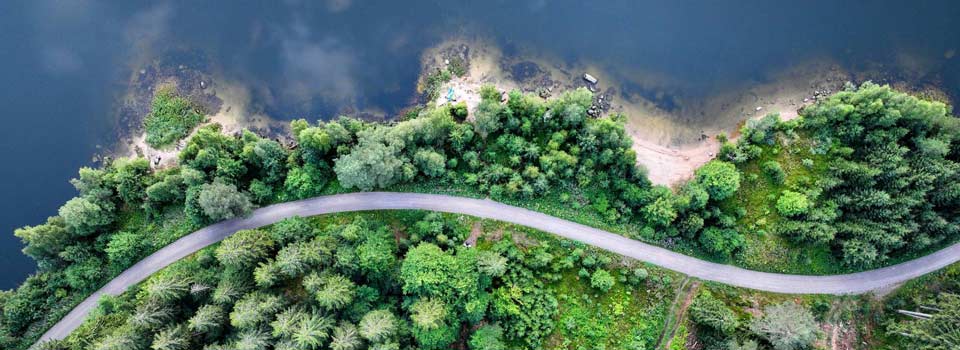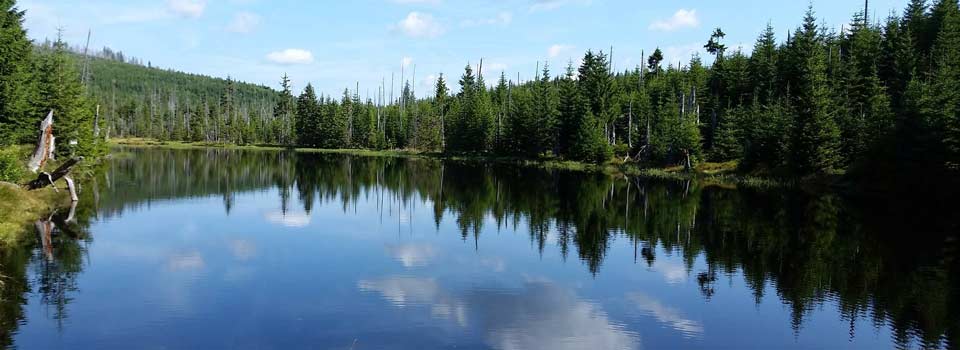Tree-planting projects and what to look out for.
Many businesses and private individuals are doing their bit for climate protection by taking part in projects to plant trees, but unfortunately, it’s not as easy as just digging a hole. To find out why that is and what people should look out for, carry on reading.
Written by
Trees are amazing things. They provide shade and a sense of tranquillity, are sources of food and a home for many animals, and keep the air fresh and the soil where it should be. Plus, they are bona fide climate warriors, producing oxygen and absorbing carbon dioxide (CO₂), which is essential for keeping global warming in check.
It seems logical then that all we have to do is plant as many trees as we can, and they’ll take do the hard work for us. Unfortunately, our huge carbon footprints make this entirely to wrong course of action. According to the Federal Ministry for Environmental Protection, every single person in Germany is responsible for generating an average of 10.8 tons of carbon dioxide annually, but as mentioned before,a beech tree has to reach the ripe old age of 80 just to be able to absorb one ton of CO₂ each year.

Responsibility doesn’t grow on trees.
One big issue with tree-planting projects is that—although there are so many out there—they don’t really do a lot to offset carbon emissions. After all, the younger the tree, the less carbon it can actually absorb, which is why companies looking to boost their green credentials by planting them should be put under the microscope especially when they in fact fuel consumption by promising to plant a tree in return for the customer making a purchase. A freshly planted tree will only compensate for the carbon emitted during production and transportation if that tree is already fairly mature, but people are blinded by thought of doing something good for the world and thus buy much more than they actually need.
Jens Schröder, Executive Editor of the GEO Group recently used LinkedIn to draw attention to another issue concerning tree-planting projects. In Germany, the Federal Forests Act stipulates that both state and private forest owners have to reforest clearings. That means that planting financed by donations would have had to have taken place anyway, just at the expense of the owners. It seems advisable, therefore, to invest in other environmental projects.
Another factor to be considered is that trees release absorbed CO₂ back into the atmosphere as soon as they start to root or the wood is burned meaning that storm damage and forest fires can quickly put paid to all the hard work planting—two events that are increasingly frequent as a result of climate change.
Where does Bechtle stand?
Some Bechtle IT system houses also plant trees as a welcome gift for new colleagues and in cooperation with partners. The idea in itself is a good one as an ETH Zürich study published in 2019 came to the conclusion that global forestation efforts covering 0.9 million hectares will one day compensate for two thirds of our CO₂ emissions. There can be no question that we have to do something to counteract deforestation and if areas previously used for agricultural purposes such as that in the Erzgebirge region in Germany are replanted—a project we proudly support—frugal forest owners don’t reap all the rewards.

It’s important to understand that donating to such projects by itself is not a viable way of ensuring that you are indeed contributing to climate protection. “To compensate for the carbon emissions we unavoidably generate, we want to support neutralisation programmes that capture, store and recycle CO₂ emissions. Forestry projects are just one possibility, but it’s crucial not to see forests as CO₂ storage areas, but as valuable ecosystems supporting biodiversity,” explains Veronika Gänsbauer, responsible for sustainability controlling at Bechtle AG.
Nonetheless, Veronika Gänsbauer is very clear: “Not investing in the forests of the future would be the wrong step to take.” She recommends taking a close look at where the donated money actually goes, investigating certificate quality as well as projects’ transparency and permanence, and looking into whether there is any detrimental impact, for example, on biodiversity. It’s critical to ask questions to make sure your good intentions really have the effect you think they will.
Things to look out for.
Make sure you look into how transparent the provider is and check their certificates. Can you see where they’ve been issued and the standards on which they were based? Have the projects be certified by an external provider? Can you view the reports?
Look into where the trees are to be planted. Those being planted on drained marshland actually cause more harm than good as marshes capture more CO₂ than forests do. When it comes to projects abroad, it’s important to look into how sustainable they are and how local people are being involved. Any project should have a positive social impact for the people nearby as only then can we really talk about sustainability.
Check what exactly is to be planted as mono-cropping brings few benefits, while a mix of native species is less likely to fall victim to disease and pests.
